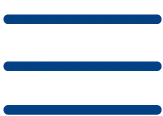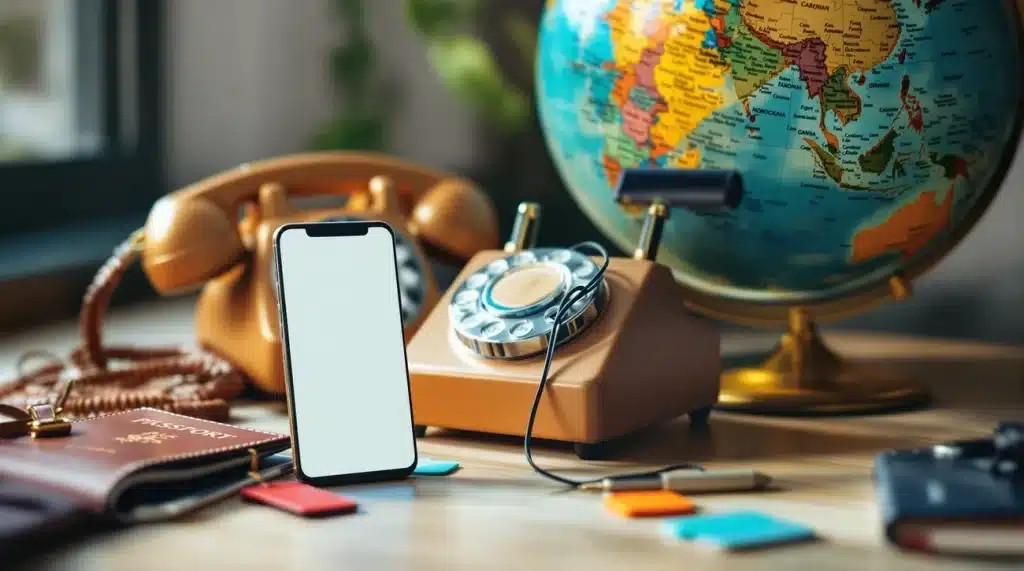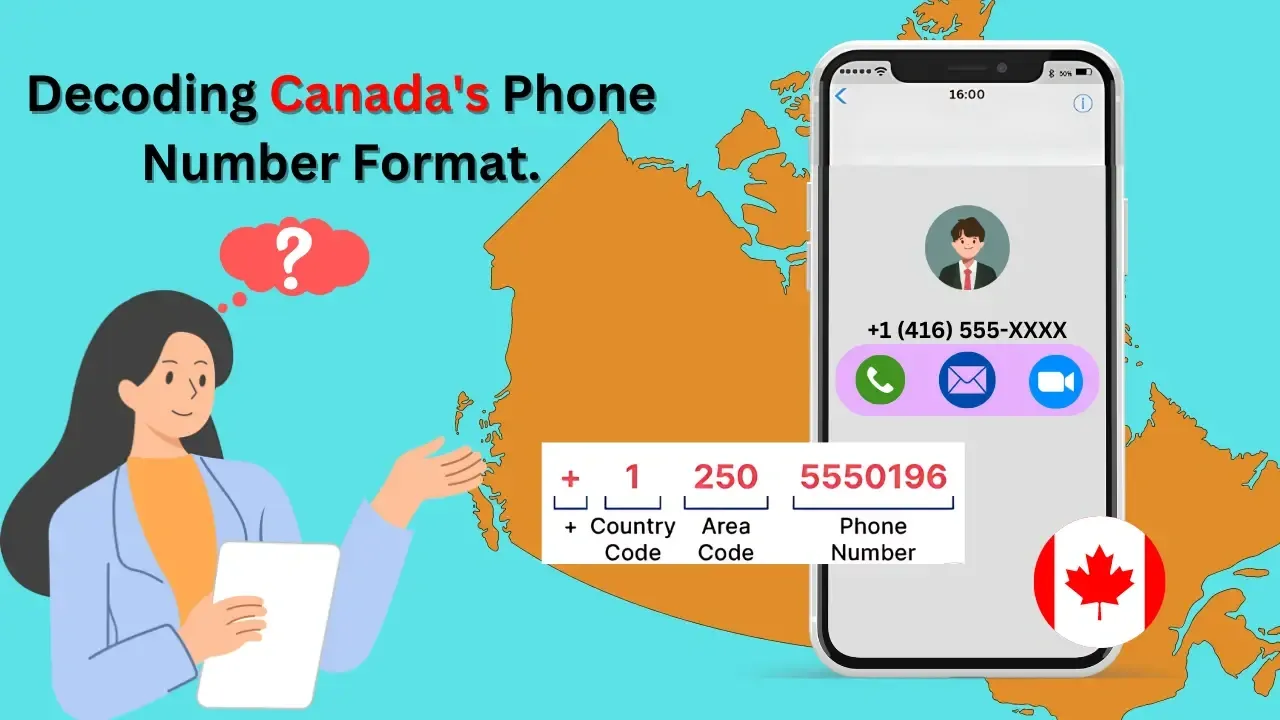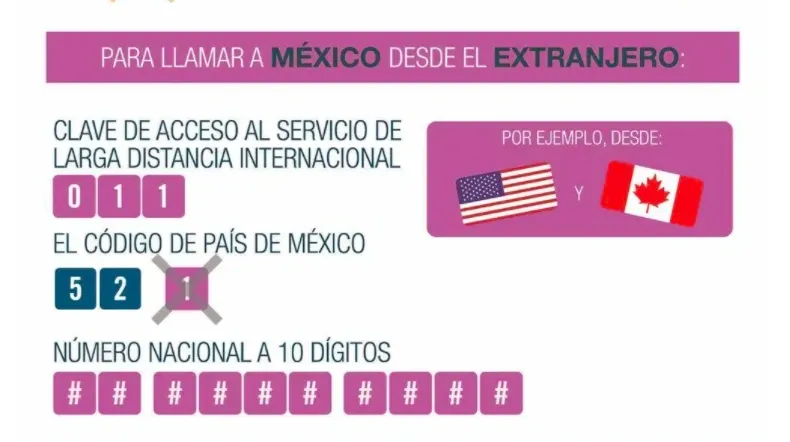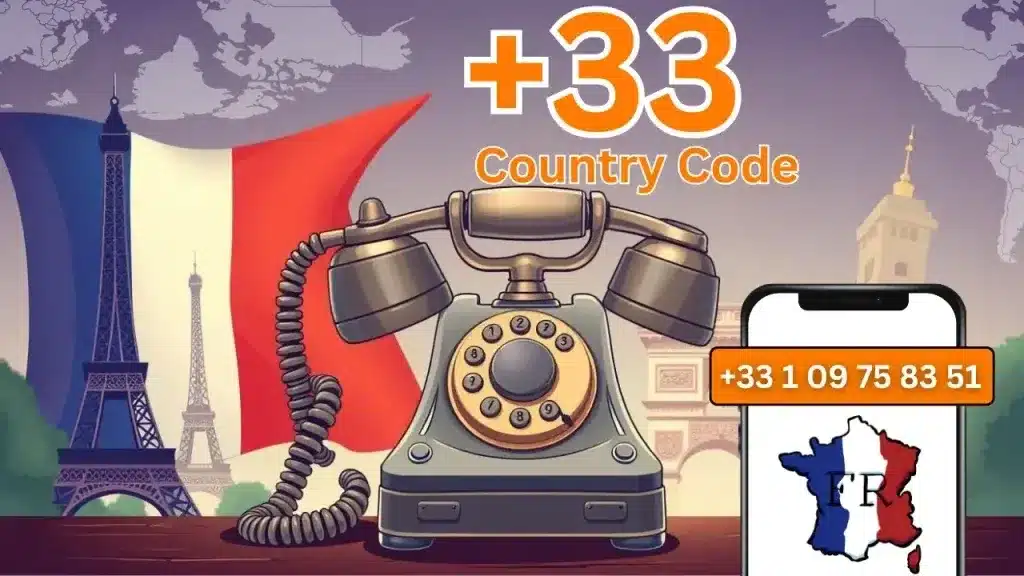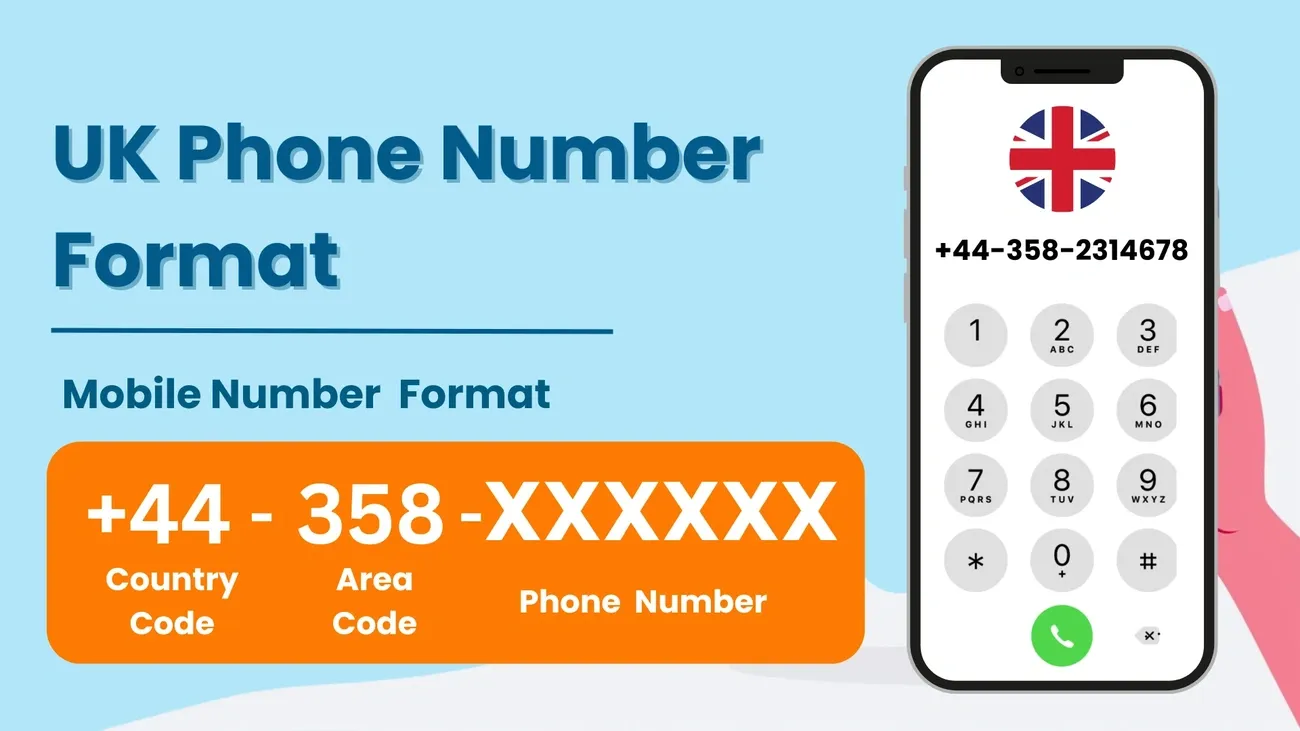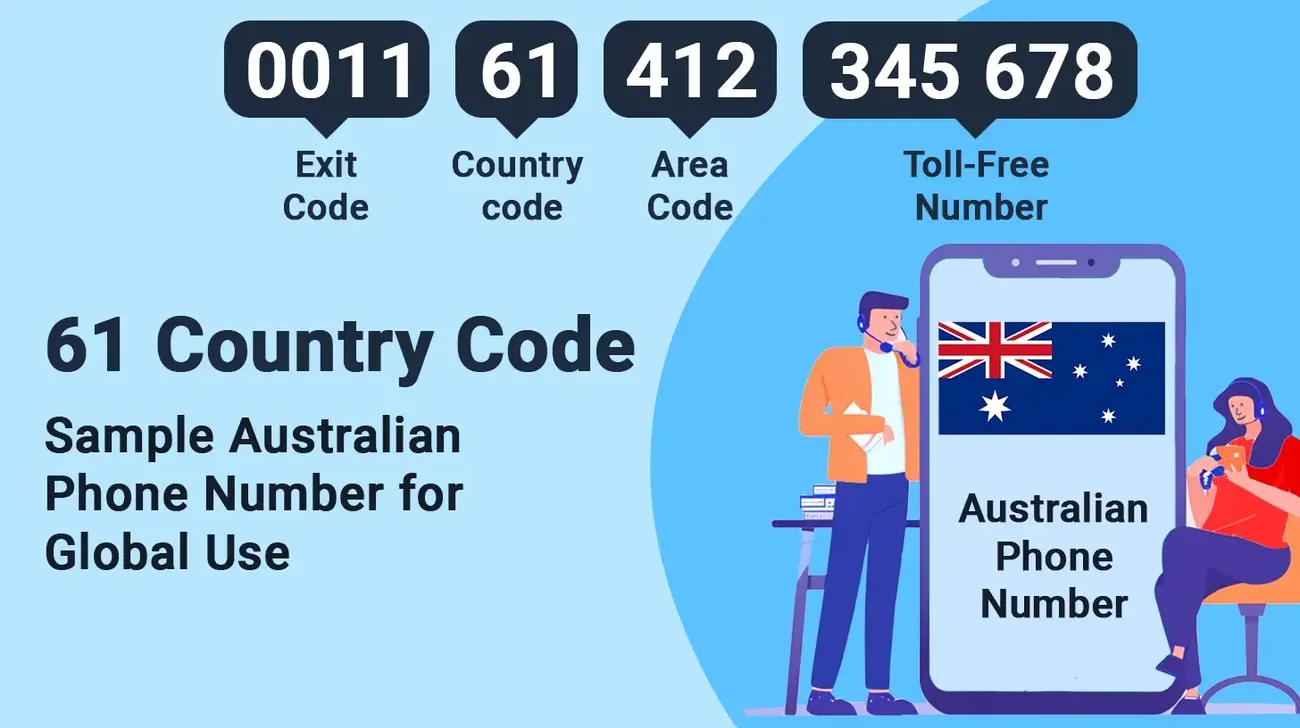International phone codes are the basis of any global communication in the middle of 2025. Understanding how they work, what they mean and what particularities each country has allows you to make more accurate calls, avoid common mistakes and optimize both personal and professional communications. This guide will help you master the most relevant prefixes in the world, understand when to skip the leading zero, anticipate important time differences, and recognize the variations between mobile and landline numbers according to each country’s phone system. With this knowledge, you will be able to connect with people and businesses anywhere in the world without barriers or confusion.
Also, if you need to make sure that an international number is actually valid before calling or integrating it into your systems, Verificaremails.com has a phone number verification service. Through its API and online tools, you will be able to confirm in seconds if a number exists, if it is operational and if it corresponds to the correct type (mobile or landline), avoiding unnecessary costs and improving the quality of your communications and databases.
How to compare the different international telephone systems?
This table will help you quickly identify the main features of each national phone system. Use it as a reference when you need to check prefixes, understand time differences, or learn about specific dialing features.
| Country | International Prefix | Area (km²) | Time zone(s) | Main Location | Special Features of the Phone System |
| United States | +1 | 9.83 million | UTC-5 to UTC-10 | North America | It does not distinguish between landlines and mobiles |
| Canada | +1 | 9.984.670 | UTC-3.5 to UTC-8 | North America | It shares a prefix with the U.S. in the NANP |
| Mexico | +52 | 1.953.162 | Not mentioned | North America | Unified 10-digit system |
| Brazil | +55 | 8.515.767 | UTC/GMT -3 | South America | Mobile with 9 digits, landlines with 8 digits |
| Argentina | +54 | 3.669.711 | Not mentioned | South America | Numbers vary between 6-8 digits depending on the region |
| Spain | +34 | Not mentioned | Not mentioned | Western Europe | Mobiles start with 6 or 7 |
| France | +33 | 675.417 | Not mentioned | Western Europe | Division into 5 main telephone zones |
| Germany | +49 | 357.580 | Not mentioned | Central Europe | Non-zero leading area codes for international calls |
| United Kingdom | +44 | 243.610 | Not mentioned | British Isles | Numbers 01/02 landline, 07 mobile |
| Italy | +39 | 301.340 | UTC+1/UTC+2 | Southern Europe | 10-digit numbers including area code |
| China | +86 | 9.596.960 | UTC+8 | Eastern Asia | A single time zone for the whole country |
| India | +91 | 3.287.263 | UTC+5:30 | South Asia | Mobile 10 digits, fixed 6-8 digits |
| Japan | +81 | 378.000 | Not mentioned | Eastern Asia | Mobiles start with 070, 080 or 090 |
| Russia | +7 | 17.125.191 | UTC+2 to UTC+12 | Eurasia | Eleven different time zones |
| South Africa | +27 | 1.219.090 | UTC+2 | Southern Africa | Three different capitals |
| Egypt | +20 | Not mentioned | UTC+2/UTC+3 | Northeast Africa | City-specific codes |
| Australia | +61 | 7.741.220 | UTC+8 to UTC+10 | Oceania | Geographic Structure of Area Codes |
| New Zealand | +64 | 268.838 | UTC+12/UTC+13 | Southwest Pacific | Mobiles start with 2 |
Remember that each country has unique particularities in its numbering system. We recommend that you always check numbers before making international calls to avoid unnecessary costs.
United States
Image Source: My Country Mobile
Do you need to communicate with the North American giant? The United States tops our list of international phone codes, and knowing its dialing system will be essential if you are a traveler, businessman or simply need to contact this influential destination.
United States International Prefix
To connect to U.S. numbers from any country, you’ll use the international dialing code +1. This code is part of the North American Numbering Plan, which is also shared with Canada and several Caribbean territories.
When dialing to the United States, you will follow this sequence: exit code from your country (usually 00 or +), then the prefix +1, and finally the full number that includes the area code.
Here’s an important fact: U.S. phone numbers maintain a fixed structure of area code (3 digits) plus local number (7 digits). Unlike other countries, you won’t find special codes that distinguish between landlines and mobiles.
United States Geographic Location
The United States dominates the central region of North America, extending over 9.83 million square kilometers that position it as the fourth largest country on the planet.
Its borders include Canada to the north (bounded by the 49°N parallel, the Great Lakes, and the St. Lawrence River), while to the south it borders Mexico following mainly the Rio Grande. Its wide coastlines embrace both the Atlantic Ocean in the east and the Pacific Ocean in the west.
The U.S. territory comprises 48 contiguous states, plus Alaska in the far northwest and the Hawaiian archipelago in the Pacific. Washington D.C. functions as the capital, although New York retains the title of most populous city.
Additional notes on the United States
Remember that the United States covers five different time zones, from UTC-5 to UTC-10. This time diversity requires special attention when planning your international calls to avoid contacting at inappropriate times.
To make successful calls, after dialing +1 you must include the area code specific to the desired region. For example, you’ll use 212 for Manhattan or 415 for San Francisco. We recommend that you verify the exact code before dialing, as these prefixes do not follow a specific geographical pattern.
If you are in the United States and need to call abroad, first dial 011 (exit code) followed by the destination country code.
Canada
Image Source: Teloz
Now you will learn how to communicate with our neighbor to the north. Canada shares many telephone features with the United States, which greatly simplifies the international dialing process.
Canada International Prefix
To establish contact with Canada from anywhere in the world, you will use the same international prefix +1 that you just learned for the United States. Both countries are part of the North American Numbering Plan (NANP), which means that the dialing process is virtually identical.
The procedure is simple: dial your country’s international exit code first (usually 00 or +), followed by the +1 prefix, the Canadian area code, and finally the seven-digit local number.
Remember that the main Canadian area codes are distributed as follows:
| Province/Territory | Area Codes |
| Alberta | 368, 403, 587, 780, 825 |
| Ontario | 226, 249, 289, 343, 416, 437, 519, 613, 647 |
| Quebec | 418, 438, 450, 514, 581, 819 |
| British Columbia | 236, 250, 604, 672, 778 |
Geographical Location of Canada
You will find a country that is truly impressive in its dimensions. Canada occupies the northern tip of the North American subcontinent, stretching from the Atlantic Ocean in the east to the Pacific Ocean in the west, and north to the Arctic Ocean.
With 9,984,670 km², it is the second largest country in the world after Russia. Its border with the United States stretches for 8,893 km, constituting the longest international border on the planet.
A notable feature that you should know is that Canada has the longest coastline in the world with 243,042 km. Despite its vast territory, you’ll find that the population is mostly concentrated near the U.S. border, where major cities like Toronto, Montreal, and Vancouver are located.
Additional notes on Canada
When planning your calls to Canada, keep in mind that the country spans multiple time zones, from UTC-3.5 to UTC-8. During the summer, these times change between UTC-2.5 and UTC-7, so we recommend checking the right time before calling.
For calls within Canada between different cities, you must dial the area code followed by the local number. If you need to call from Canada to another country, dial the exit code (011) first, then the destination country code and finally the number.
An important detail to remember: just like in the United States, Canadian numbers do not distinguish between landlines and mobiles using specific prefixes. Both types follow exactly the same dialing format.
Mexico
Image Source: Dallas Morning News
Now we will show you how to connect with Mexico, the third country on our list of international phone codes. This neighboring country of the United States has completely modernized its communications system, which greatly facilitates international calls.
Mexico International Prefix
To call Mexico from anywhere in the world, you must use the international dialing code +52. An important thing to know: As of August 3, 2019, Mexico implemented a new numbering plan that eliminated the concepts of long distance calling and the region indicator (NIR). What does this mean for you? That now all Mexican telephone numbers use a unified 10-digit format.
An interesting feature of the Mexican system is that the first digit of the telephone number represents a specific geographical area according to the following distribution:
- 2: Orient
- 3: The West
- 4: North
- 5: Downtown
- 6: Northwest
- 7: South
- 8: Northeast
- 9: Southeast
Geographical location of Mexico
Mexico is strategically located in the southern part of North America. It is bordered to the north by the United States, to the southeast by Guatemala and Belize, to the east by the Gulf of Mexico and the Caribbean Sea, and to the west by the Pacific Ocean. Its territory covers approximately 1,953,162 km², distributed almost equally on both sides of the Tropic of Cancer.
The extreme coordinates that delimit Mexican territory are: 14°32’27” in the south (border with Guatemala), 32°43’06” in the north (border with the United States), 86°42’36” in the extreme southeast (Isla Mujeres) and 118°27’24” west (Guadalupe Island).
Additional notes on Mexico
Remember that when calling Mexico you no longer need to use the prefixes 01, 044 and 045 that were previously used for different types of calls. Likewise, for calls from the United States and other countries to Mexican mobile numbers, it is no longer necessary to add the number “1” after the country code (+52).
The current correct dialing is simply the +52 code followed by the 10 digits of the number, regardless of whether it is a landline or mobile number. This simplified system greatly facilitates international communications with Mexico and eliminates the confusion that previously existed.
Brazil
Image Source: Talk360
We continue our journey through international telephone codes to Brazil, the South American giant that combines tradition and innovation in its communications. This continental country deserves your attention if you plan to make contact with its more than 200 million inhabitants.
Brazil International Prefix
To contact Brazil from anywhere in the world, you must use the international dialing code +55. Correct dialing requires you to first type in your country’s exit code, followed by the Brazilian prefix, area code, and local number. If you want to call Rio de Janeiro, you would dial: exit code + 55 + 21 + local number.
Here you will find an important difference: Brazilian landline numbers have 8 digits, while mobile numbers have 9 digits and usually start with the number 9. Cities such as São Paulo, Rio de Janeiro and Espírito Santo implemented the ninth digit to expand their numerical capacity.
Geographical location of Brazil
Brazil dominates the eastern part of South America, positioning itself as the third largest country on the continent and the fifth worldwide. Its impressive area of 8,515,767.049 square kilometers represents almost half of the South American territory (47.3%).
This geographical colossus borders practically all South American countries: to the north by Venezuela, Colombia, Guyana, Suriname and French Guiana; to the west by Peru and Bolivia; to the south by Paraguay, Argentina and Uruguay. Its extensive eastern coast of 7,367 kilometers is completely bathed by the Atlantic Ocean.
Additional Notes on Brazil
When planning calls to Brazil, keep in mind that the country has four time zones, all located west of the Greenwich meridian. The official time of Rio de Janeiro corresponds to UTC/GMT -3. For domestic calls between Brazilian cities, you must dial: 0 + operator code + city code + phone number.
If you need to make collect calls within the country, dial 9090 + phone number for local calls, or 90 + provider code + city code + number for national calls.
Argentina
Do you need to communicate with Argentina? This fascinating country in the Southern Cone has a particular phone system that you should know to establish successful connections. We explain step by step how to correctly mark this South American destination.
Argentina International Prefix
To communicate with Argentina from anywhere in the world, you must use the international dialing code +54. Argentine telephone numbers have a ten-digit structure that includes the area code (intercity indicator) and the subscriber number.
Remember these important points when dialing:
When calling from a landline to an Argentinian cell phone, you must put 15 before the subscriber number. However, if you make the call to an Argentine cell phone from abroad, you must put a 9 before the area code.
Geographical location of Argentina
Argentina extends over a large part of the South American Cone, bordering Bolivia and Paraguay to the north; to the south by Chile and the South Atlantic Ocean; to the east by Brazil, Uruguay and the South Atlantic Ocean; and to the west by Chile.
With a total area of 3,669,711 km², Argentina ranks fourth among the largest countries in the Americas and eighth in the world. Its continental territory covers 2,780,085 km².
Additional Notes on Argentina
Keep in mind that from abroad you cannot access the Argentine 0800 or 0810 lines. Also, for international calls to Argentina, after the international prefix you must dial the area code without the initial 0.
The Argentine system uses different formats depending on the location: Buenos Aires and its metropolitan area handle 8 local digits, large cities outside this area have 7 digits, while the rest of the cities and towns have 6 digits.
We recommend that you always check the specific area code before making your call to avoid communication issues.
Spain
We now arrive in Spain, a destination that you will know in depth in terms of its international communications. This European country has a telephone system that makes calls from abroad much easier, especially if you follow the correct guidelines that we will explain below.
Spain International Prefix
To communicate with Spain from any country, you must use the international dialing code +34. The process is simple: first dial the exit code of your current location (usually 00 or the + symbol), then the Spanish prefix, and finally the full 9-digit number.
An important feature that you should know about Spanish numbers is their structure: landlines always start with 8 or 9, while mobiles start with 6 or 7. This distinction will help you quickly identify the type of line you’re marking.
Geographical location of Spain
Spain occupies a strategic position in southwestern Europe, covering most of the Iberian Peninsula. In addition to the peninsular territory, it includes the Balearic Islands in the Mediterranean, the Canary Islands in the Atlantic, and two autonomous cities in North Africa: Ceuta and Melilla.
The country is bordered by Portugal to the west, France and Andorra to the north, the Mediterranean Sea to the east, and Morocco to the south. This privileged geographical location makes Spain a meeting point between Europe and Africa.
Additional notes on Spain
Remember that Spanish landline numbers use specific provincial prefixes. For example, if you need to call Madrid you will use 91, while for Barcelona you will use 93.
Likewise, since 2020, new prefixes starting with 8 have been implemented in fifteen provinces due to the saturation of numbers that begin with 9. This change modernizes the system and expands the numbering possibilities.
To make calls from Spain to other countries, you must dial 00 followed by the destination international prefix. We recommend that you always check the correct prefix before dialing to avoid erroneous calls.
France
Image Source: Letsdial
We continue our tour of the international prefixes arriving in France, where you will learn how one of the most organized telephone systems in Europe works. We will show you step by step how to connect with this destination that combines tradition and modernity.
France International Prefix
Do you need to contact France from your country? To establish communication with French territory, you will use the international prefix +33. French numbers have an important particularity that you should know: they consist of 10 digits and always start with zero for national calls.
Remember that when dialing from abroad, you omit this leading zero. A practical example: to call Paris you would dial exit code + 33 + 1 + 8-digit local number.
Geographical location of France
France extends in Western Europe covering 675,417 km² including its overseas territories. This country borders nine European nations: Belgium, Luxembourg, Germany, Switzerland, Italy, Monaco, Spain, Andorra and the United Kingdom, in addition to maintaining borders with three American countries through its overseas territories.
Additional notes on France
We recommend that you know the French telephone division before making your call. The French metropolitan territory is structured into five main zones:
- 01: Île-de-France (Paris region)
- 02: Northwest Region and Indian Ocean Territories
- 03: Northeast Region
- 04: Southeast Region and Corsica
- 05: Southwest Region and Atlantic Overseas Territories
Mobile numbers use the prefixes 06 or 07, while voice over IP services use 09. This organization makes it easy to identify the type of line before establishing communication.
Germany
How to make calls to the economic heart of Europe? We show you everything you need to know about communications with Germany, a country that stands out for its efficiency in both technology and telecommunications.
Germany International Prefix
To communicate with Germany from anywhere in the world, you must use the international dialing code +49. Here’s a step-by-step process: first dial your country’s international exit code (usually 00 or +), followed by the German prefix, and then the local number.
Remember that when calling German landlines from abroad, you must omit the leading zero of the area code. For example, if you want to call Berlin, instead of dialing 030, you would use: exit code + 49 + 30 + local number.
Geographical location of Germany
This country is strategically positioned in Central Europe, surrounded by nine nations. To the north it is bordered by the North Sea, Denmark and the Baltic Sea; to the east by Poland and the Czech Republic; to the south by Austria; to the southwest by Switzerland; and to the west by France, Luxembourg, Belgium and the Netherlands.
With a total area of 357,580 km², Germany ranks fourth among the largest countries in the European Union. Its geography presents an interesting variety: from the plains in the north to the impressive Bavarian Alps in the south, where you find its highest point, the Zugspitze, which reaches 2,962 meters.
Additional notes on Germany
We recommend that you know the German numbering structure to make successful calls. Mobile numbers use specific prefixes such as 015, 016 or 017, while major cities have particular area codes: Berlin (030), Hamburg (040), Munich (089) and Frankfurt (069).
For emergency situations, you can dial 110 to contact the police or 112 for medical and fire services. These numbers operate 24 hours a day throughout Germany.
United Kingdom
Image Source: Teloz
Continuing our tour of the international telephone codes, we arrive in the United Kingdom, where you will discover a communications system that reflects the territorial organization of this historic island nation.
UK International Prefix
Do you need to contact British numbers? To communicate with the UK from abroad, use the international dialling code +44. Here’s how to make the call correctly: first dial your country’s international exit code, followed by the British prefix, and then omit the initial 0 from the local number.
A practical example: to call London (020), you would dial: exit code + 44 + 20 + local number without the leading zero.
Geographical location of the United Kingdom
The United Kingdom occupies the island of Great Britain, the north-east of the island of Ireland (Northern Ireland) and smaller islands. It is located between latitudes 49° and 59° N, with a territorial extension of approximately 243,610 km². This country is bordered to the north by the Atlantic Ocean and the North Sea, while to the south is the English Channel, which separates it from France.
Additional notes on the United Kingdom
You will learn that British telephone numbers are classified according to their prefix: those starting with 01 and 02 are geographic landlines, those starting with 07 correspond to mobiles, while 03 are non-geographic national numbers.
Remember that the country has two emergency numbers: 999 (traditional British) and 112 (European standard). In addition, toll-free numbers start with 080 or 0500, while premium-rate numbers use prefixes 08 and 09.
If you need to make frequent calls to the UK, we recommend checking the numbers beforehand to ensure successful connections.
Italy
Image Source: Letsdial
We continue our tour of the international telephone codes arriving in Italy, where you will learn how to contact this fascinating Mediterranean country that combines millenary history with a modern and efficient communications system.
Italy International Prefix
Need to call Italy from abroad? Use the international dialing code +39. The Italian dialing structure is particular: telephone numbers consist of 10 digits including the area code. Unlike other European countries, when dialing from abroad you should not prepend the leading zero of the area code.
For example, if you want to call Rome (06), the correct dialing would be: exit code from your country + 39 + 6 + local number. Remember that this simplicity in dialing makes contacting Italy quite direct.
Geographical location of Italy
Italy is strategically located in southern Europe, occupying a total area of 301,340 km². The Italian territory is geographically divided into three main areas: continental, peninsular and insular.
To the north, Italy is bordered by France, Switzerland, Austria and Slovenia through the majestic Alps mountain range. The rest of its territory is completely surrounded by the waters of the Mediterranean Sea, which adopts different names depending on the region: Tyrrhenian Sea, Adriatic Sea, Ionian Sea, Ligurian Sea and others. Its extensive coastline reaches 7,914 km.
Additional notes on Italy
When planning your calls to Italy, keep in mind that the country uses the CET (UTC+1) time zone during the winter and CEST (UTC+2) in the summer. This information will help you choose the most appropriate time to communicate.
If you are in Italy and need to make international calls, you must dial 00 followed by the destination country code. In addition, as a practical fact for travelers, the Italian plugs use the Cei 23-50 standard, with 220V electricity and a frequency of 50 Hz.
China
We continue our tour of the international telephone prefixes with China, an Asian power whose communications system reflects the magnitude of this ancient civilization turned technological giant.
China International Prefix
To communicate with Chinese numbers from anywhere in the world, you must use the international prefix +86. When making the call, dial your country’s international exit code first, followed by the Chinese prefix, the city code without the leading zero, and finally the local number.
For example, to call Beijing (010), you would dial: exit code + 86 + 10 + local number. Remember that the process is simple once you know the correct dialing structure.
Geographical Location of China
China is located in East Asia, occupying an extensive land area of 9,596,960 km², which positions it as the third largest country in the world after Russia and Canada. Its territory extends from the meridian 73°E to 135°E, covering one-twelfth of the world’s longitude. It also has a coastline of 14,500 km bathed by the Pacific Ocean, which includes the Yellow, Bohai, East and South China Seas.
Additional notes on China
Something fascinating about China is that it uses a single time zone, UTC+8, despite its vast territorial extension. In addition, some major cities have specific area codes such as Beijing (10), Shanghai (21), and Guangzhou (20).
For internal calls between Chinese cities, you must dial the number 0 before the corresponding area code. We recommend that you always check the specific area code before making your call to avoid inconvenience.
India
Image Source: elEconomista.es
Have you ever wondered how to contact the second most populous country in the world? In this section you will learn everything you need to communicate with India, a nation where millenary tradition meets the most advanced technological innovation.
India International Prefix
To establish contact with India from anywhere on the planet, you must use the international prefix +91. We recommend you follow these steps: first dial the international exit code of your country, followed by the Indian prefix and then the full number without omitting any digits.
Remember that mobile phones in India consist of 10 digits, while landlines vary between 8 digits for large cities and 6-7 for smaller populations. This difference is important to consider when checking the number before dialing.
Geographical Location of India
India is located in South Asia, occupying most of the Indian subcontinent. With an area of 3,287,263 km², it is the seventh largest country in the world. Its coordinates extend between 8°4′ and 37°6′ north latitude and 68°7′ and 97°25′ east longitude.
This vast territory is bordered to the north by Nepal, Bhutan and China; to the south by the Indian Ocean, the Palk Strait and the Gulf of Mannar (which separates it from Sri Lanka); to the west by the Arabian Sea and Pakistan; and to the east by Myanmar, the Bay of Bengal and Bangladesh.
Additional notes on India
India uses a single time zone called IST (Indian Standard Time), with a difference of UTC+5:30. This information is crucial when planning your calls to avoid contacting at inappropriate times.
In addition, the country has specific area codes for its major cities: Delhi (11), Mumbai (22), Bangalore (80), and Chennai (44). For local calls within India, the STD code corresponding to the region must be prepended when dialing from a different zone.
If you need to make frequent calls to India, we recommend that you check the numbers with specialized services beforehand to ensure that the details are correct and avoid unnecessary expenses.
Japan
On our journey through the international prefixes we arrive at the archipelago of the rising sun. You’ll learn how to communicate with this technological nation that combines millennia-old traditions with innovations that facilitate global connections.
Japan International Prefix
To contact Japanese numbers from anywhere in the world, use the international dialing code +81. Here’s how it works: dial your country’s exit code first, followed by the Japanese prefix, and then the number without the leading zero in the area code.
Remember that Japanese mobile numbers usually start with 070, 080, or 090, which will help you identify whether you’re calling a landline or mobile.
Geographical location of Japan
Japan is a stratovolcanic archipelago located in Northeast Asia, surrounded by the Pacific Ocean, the Sea of Okhotsk, the Sea of Japan, and the East China Sea. With approximately 378,000 square kilometers, this island territory comprises four main islands: Hokkaido, Honshu, Shikoku, and Kyushu, in addition to thousands of smaller islands.
Its extreme points extend from Minami-Tori Shima (153°59’12” east longitude) in the east to Yonagunijima (122°55’57” east longitude) in the west.
Additional notes on Japan
Did you know that Japan is predominantly mountainous? About two-thirds of its territory is covered by forests. For your international calls, consider that most of the country enjoys a temperate climate with four well-defined seasons, although Okinawa has subtropical characteristics and Hokkaido is subarctic.
We recommend you keep in mind that Japan has four UNESCO World Heritage Sites: Shiretoko, Shirakami-Sanchi, Ogasawara Islands and Yakushima, which reflect the extraordinary biodiversity of the archipelago.
Russia
How to contact the largest country on the planet? In our exploration of global phone codes, we reach the immense nation that links two continents. This territorial giant has a communications system as extensive as its borders.
Russia International Prefix
When you need to communicate with Russia from abroad, use the international dialing code +7. This code is shared with Kazakhstan according to an agreement between the two nations on the use of the international resource of E.164 numbering. The correct sequence is: your country’s international exit code, followed by the Russian prefix, the area code, and finally the local number.
Geographical location of Russia
Russia is the largest country on the planet, occupying 17,125,191 km² and covering almost all of northern Eurasia. Its territory is spread over two continents: 25.3% in Eastern Europe and 74.7% in North Asia. It is bordered by 16 countries, the most international borders of any state, and has coastlines bathed by the Arctic Ocean, the northern Pacific Ocean, and inland seas such as the Baltic, Black, and Caspian.
Additional notes on Russia
Note that there are eleven different time zones on Russian territory, from UTC+2 to UTC+12. In addition, the Russian telephone system uses region-specific area codes, such as 495 and 499 for Moscow or 812 for St. Petersburg. For emergency calls, Russia has the 112 number, which integrates all essential services.
South Africa
Now we explore the so-called rainbow nation, a fascinating African country that connects two oceans at the southern tip of the continent. Did you know that this destination has a telephone system as diverse as its multiple official languages?
South Africa International Prefix
To contact South Africa from anywhere on the planet, you will need to use the international dialing code +27. The process is simple: first dial the exit code of your country (usually 00 or +), then the South African prefix and finally the full number. If you’re calling from the United States, for example, you’d dial: 011 + 27 + area code + local number.
Remember to omit the initial 0 of the area code when making calls from abroad. This detail can make the difference between a successful connection and a failed attempt.
Geographical location of South Africa
This country is located at the southern tip of the African continent, occupying an area of 1,219,090 km². Its territory is bordered to the north by Namibia, Botswana and Zimbabwe, while to the east it shares borders with Mozambique and Swaziland. Fun fact: Lesotho is completely surrounded by South African territory.
Its coasts, which extend approximately 2,798 km, are bathed by both the Atlantic and Indian Oceans. This privileged location makes South Africa a strategic point between two large ocean masses.
Additional notes on South Africa
You will find it interesting to know that South Africa has three different capitals: Pretoria (administrative), Cape Town (legislative) and Bloemfontein (judicial). In addition, it uses the UTC+2 time zone throughout the year, without applying seasonal time changes.
The official currency is the Rand (R), and its eleven official languages include Afrikaans, English, Ndebele, Sesotho and Zulu. This linguistic diversity reflects the cultural richness of the country and can influence telephone communications depending on the region you contact.
Egypt
Now we will take you to the cradle of the pharaohs, where the millenary pyramids contrast with modern communication systems. Egypt represents that fascinating meeting point between Africa and Asia that every traveler should know.
Egypt International Prefix
To contact Egypt from anywhere in the world, you will need to use the international dialing code +20. Dialing is simple: first type in the exit code for your country, then the Egyptian prefix and finally the full number without omitting figures.
The major cities have their own codes that you should memorize: Cairo uses 2, Alexandria 3, while Luxor uses 95 and Port Said 66. Remember these numbers if you plan to visit these historic towns.
Geographical Location of Egypt
Did you know that Egypt is one of the few transcontinental countries in the world? It is strategically located in the northeastern tip of Africa, extending its territory into Asia through the Sinai Peninsula.
This fascinating country is bordered by Libya to the west, Sudan to the south, and Israel along with the Gaza Strip to the northeast. Its extensive coasts enjoy the waters of the Mediterranean to the north and the Red Sea to the east and southeast.
Additional notes on Egypt
When planning your calls to Egypt, keep in mind that they use the EET (UTC+2) time zone during the winter, changing to EEST (UTC+3) in the summer months.
If you are in Egyptian territory and need to call abroad, simply dial 00 followed by the prefix of the destination country. An additional curiosity: although most of the territory has a desert climate, the northern coastal areas enjoy a pleasant Mediterranean climate.
Australia
Image Source: My Country Mobile
Did you know that Australia is the only country that is also a continent? This unique feature is reflected in its efficient communications system, which will allow you to connect with this fascinating ocean destination.
Australia International Prefix
To establish communication with Australia, you will need to use the international dialing code +61. The process is simple: dial your country’s exit code, then the Australian prefix, omit the zero from the area code, and end with the local number. If you want to call Sydney (02), the sequence would be: exit code + 61 + 2 + local number.
Geographical location of Australia
Australia is located in Oceania, strategically located between the Indian Ocean and the South Pacific. This country-continent has an area of 7,741,220 km², which makes it the sixth largest territory in the world. Its exact coordinates are latitude -25.274398 and longitude 133.775136, placing it entirely in the southern hemisphere.
The Australian territory features a diverse geography that includes eastern highlands, extensive floodplains, the western plateau and vast central deserts. Its coastline stretches for 25,760 km and is home to natural wonders such as the Great Barrier Reef.
Additional notes on Australia
We recommend considering multiple Australian time zones before making calls. The country handles times from UTC+8 in Western Australia to UTC+10 on the east coast. During the summer, some regions apply daylight saving time, extending the difference to UTC+11.5.
Australian numerals follow an organized geographical structure: code 2 corresponds to New South Wales, 3 to Victoria, and 8 covers Western and South Australia. This organization makes it easy to identify the destination region of your call.
New Zealand
Image Source: Teloz
Interested in communicating with New Zealand? This fascinating archipelago in the South Pacific combines extraordinary natural landscapes with a modern and efficient telephone system.
New Zealand International Prefix
To connect to New Zealand from anywhere in the world, you’ll need the international dialing code +64. The process is simple: dial your country’s exit code, then the New Zealand prefix and finally the full number omitting the initial zero of the area code. For example, if you want to call Auckland from Spain, you would dial: 00 + 64 + 9 + local number.
The New Zealand telephone structure is organised by the country code, followed by the national destination code (NDC) and the subscriber number. Remember that this simplified format facilitates international communications with the Kiwi country.
Geographical location of New Zealand
New Zealand is strategically located in the southwest Pacific Ocean, approximately 2,000 kilometers from Australia. This island territory comprises two main islands: the North Island (Te Ika-a-Māui) and the South Island (Te Waipounamu), as well as about 700 smaller islands.
With a total area of 268,838 km² and an extensive coastline of 15,134 km, New Zealand offers a diverse and spectacular geography. Wellington, located on the North Island, functions as the country’s capital.
Additional notes on New Zealand
Note that New Zealand uses the UTC+12 time zone, except in the remote Chatham Islands where UTC+12:45 is used. During the summer months, the country implements UTC+13, which can influence the ideal time to make your calls.
New Zealand mobile numbers usually start with the digit 2, while area codes for landlines vary between one and two digits. Auckland uses code 9 and Wellington uses code 4. If you plan on making frequent calls to New Zealand, we recommend checking these specific codes before dialing.
Conclusion
Have you noticed the incredible diversity that exists in the world’s phone systems? During our tour of these 18 countries, you have been able to observe how each nation develops its own numbering structure, reflecting its territorial organization and technological advances.
From the +1 shared by the United States and Canada to the peculiar +64 in New Zealand, each prefix tells a story. Remember that these codes represent much more than just numbers: they are the key to connecting with people and business opportunities in any corner of the planet.
Did you know that factors such as geography directly influence communications? Huge countries like Russia handle eleven different time zones, while China, with its vast expanse, operates with a single time zone. These particularities can make the difference between the success and failure of your international communications.
Before making your next international calls, we recommend you take into account some practical aspects. Always verify phone numbers with specialized services to make sure the details are correct and avoid unnecessary expenses. Also, pay special attention to time differences to contact at appropriate times.
An important detail to remember: always omit the leading zeros of area codes when making calls from abroad. This simple action can determine whether your communication will be successful or not.
It also considers that some countries distinguish between fixed and mobile numbers using specific prefixes, while others use the same format for both types of lines. Knowing these differences will allow you to quickly identify the type of number you’re dialing.
The time investment you spend understanding these systems will be recouped from your first successful international call. This compendium of phone prefixes will serve as a fundamental reference guide for your global communications, removing barriers and bringing people closer together through modern telecommunications.
If you have any questions about international phone number verification, our support team will be happy to help you streamline your global communications.
Key Points
This comprehensive guide to international phone codes provides you with the essential tools to communicate effectively with any country in the world in 2025.
• The United States and Canada share the +1 prefix within the North American Numbering Plan, facilitating communications between the two countries.
• Always skip the leading zero of the area code when making international calls from abroad to ensure successful connections.
• Consider time differences before calling: countries like Russia have 11 time zones while China uses only one (UTC+8).
• Telephone systems vary significantly: some countries distinguish between mobile and fixed by specific prefixes, others make no distinction at all.
• Verify numbers before dialing to avoid unnecessary costs and ensure your international communications are effective and accurate.
Mastering these prefixes and their particularities will allow you to establish global communications without barriers, connecting people and business opportunities in an increasingly interconnected world.
FAQs
Q1. What is Chad’s international phone code? Chad’s international dialling code is +235.
Q2. How can I identify the country of origin of a phone number? The first digits of a phone number, known as an international prefix, indicate the country of origin. For example, +1 corresponds to the United States and Canada, +34 to Spain, and +86 to China.
Q3. What should I consider when making international calls? When making international calls, it is important to consider the country code, omit the leading zero of the area code in most cases, and take into account time differences to call at appropriate times.
Q4. Do all countries use the same format for mobile and landline numbers? No, the format varies by country. Some countries such as the United States do not distinguish between fixed and mobile numbers, while others such as Spain use specific prefixes (6 or 7 for mobiles).
Q5. How many digits do phone numbers usually have in different countries? The number of digits varies by country. For example, in Mexico all numbers have 10 digits, in India mobiles have 10 digits and landlines between 6 and 8, while in Argentina they can vary between 6 and 8 digits depending on the region.
